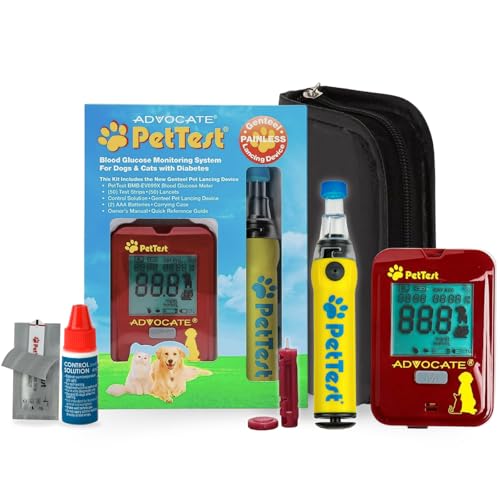




Choosing to end a beloved pet’s suffering is an incredibly difficult decision, but it can be made with compassion and care. The process, when handled by a qualified veterinarian, is designed to minimise discomfort as much as possible. Administering a sedative beforehand helps the animal relax, allowing them to drift into a peaceful state before the final act occurs.
It’s crucial to discuss the procedure with your vet. They can provide insights into what to expect, ensuring you’re informed every step of the way. Many owners report that being present during the process, while painful, can bring a sense of closure and connection, knowing they are there for their furry friend in their final moments.
Reflecting on my own experience, I remember the heartache of watching my canine companion suffer. When the time came, I sought advice from my vet, who explained every detail and offered support. The comfort I found in knowing that my pet wouldn’t endure any more pain made a tough decision slightly more bearable.
It’s also worth considering your pet’s quality of life before making this choice. Signs of distress, pain, or loss of appetite can indicate that their well-being is severely compromised. Taking time to evaluate these factors, with the guidance of a professional, can help clarify the best path forward.
Understanding the Euthanasia Process for Dogs
Choosing to end a pet’s suffering is often one of the hardest decisions a guardian must face. The euthanasia procedure typically involves the administration of a sedative followed by a lethal injection. This approach is designed to ensure a smooth transition. The sedative helps to calm the animal, making the experience as serene as possible.
During the process, it’s common to have the pet’s guardian present. Being there can provide comfort to your furry friend in their final moments. Many veterinary clinics offer a quiet and peaceful environment, allowing the animal to pass away in a familiar setting. This can reduce anxiety for both the pet and the owner.
What to Expect
The initial sedative is usually injected into a vein, often in a leg. After a few minutes, the animal becomes relaxed and may even fall asleep. Following this, the second injection is administered, leading to the cessation of heart function. The entire procedure generally takes only a few moments. It’s important to understand that the aim is to ensure a gentle departure, allowing the beloved companion to leave this world without distress.
Aftercare Options
After the procedure, guardians have several options regarding the remains. Many choose cremation, while others may opt for burial. It’s advisable to discuss these choices with the veterinary team beforehand to ensure that personal wishes are respected. The emotional impact of this decision can be profound, so allowing time for grieving is equally significant.
Methods Used to Ensure a Peaceful Passing
Choosing the right method for a gentle farewell is crucial. One of the most common techniques is the administration of an overdose of an anaesthetic agent, typically given via injection. This process is designed to induce a deep sleep, allowing the animal to drift away quietly.
Veterinarians often recommend a pre-medication step, which involves administering sedatives beforehand. This helps to reduce anxiety and discomfort, ensuring that the transition is as calming as possible. The timing and dosage of these medications are tailored to each individual, based on their specific needs and health status.
Creating a familiar environment is another significant aspect. Many pet owners opt for home euthanasia services, allowing their beloved companions to remain in a comfortable and safe space. Familiar scents, sounds, and the presence of loved ones can provide immense comfort during this time.
Some clinics also offer a serene setting, away from the noise and bustle of a busy veterinary office. Soft music and gentle lighting can contribute to a tranquil atmosphere, promoting a sense of peace for both the animal and the owner.
Aftercare options vary, with some people choosing cremation or burial. It’s important to discuss these preferences beforehand, as they can help in planning a fitting tribute to the life shared.
For those looking into dietary considerations that may support a pet’s well-being in their final days, options like who makes waitrose dog food can be explored. Nutritional support can enhance comfort during this difficult time.
Signs That Indicate It’s Time for Euthanasia
Recognising the right moment for ending suffering is challenging yet crucial. Here are specific signs that suggest it may be time to consider humane options:
- Chronic Pain: If your companion displays ongoing discomfort, even with medication, it may indicate a decline in quality of life.
- Loss of Appetite: A significant decrease in food and water intake can signal that they are no longer interested in life.
- Mobility Issues: Difficulty standing, walking, or performing basic activities can indicate severe decline.
- Behavioural Changes: Increased aggression, withdrawal, or anxiety may suggest they are struggling emotionally.
- Incontinence: Frequent accidents in the house can be distressing for both of you, signalling a loss of bodily control.
- Respiratory Distress: Laboured breathing or persistent coughing can indicate underlying issues that lead to suffering.
- Unresponsive to Treatment: If medications or interventions no longer provide relief, it may be a sign of worsening conditions.
Reflecting on these signs can help you assess your furry friend’s quality of life. I learned this the hard way with my first canine companion. Despite trying various treatments, I noticed his joy had faded, and he struggled daily. It was heart-wrenching but necessary to make the compassionate choice for his peace.
Consulting with a veterinarian can provide further insights and support. They can help evaluate your pet’s condition objectively and guide you through this difficult decision.
Emotional Considerations for Pet Owners
When facing the decision to end a beloved pet’s life, it’s crucial to know that the emotional toll can be profound. I remember the day I had to make such a choice for my dear companion. The weight of that responsibility pressed heavily on my heart. It’s vital to acknowledge and process these feelings rather than suppress them.
Understanding Grief and Loss
Grieving is a natural response. Each person experiences it uniquely, and it’s okay to feel a mix of sadness, relief, guilt, and even confusion. Allow yourself to grieve openly. Talk to friends or family who understand the bond you shared. Remember, it’s perfectly acceptable to seek professional support if the feelings become overwhelming.
Creating a Support System
Surround yourself with people who empathise with your situation. Sharing memories or simply discussing your feelings can be incredibly therapeutic. Consider joining a pet loss support group, either in person or online. Connecting with others who have faced similar challenges can provide comfort and understanding. Below is a simple structure to help you manage your emotions:
| Emotion | Suggested Action |
|---|---|
| Sadness | Journal your feelings; write letters to your pet. |
| Guilt | Reflect on the love you provided; consider the quality of life. |
| Relief | Recognise this feeling as part of the process; it’s okay to feel this way. |
| Confusion | Talk it out with someone who understands; clarity often comes with time. |
Every emotion has its place in this experience. Honour the bond you shared, and remember that it’s okay to seek help through this challenging time. Allow yourself to heal at your own pace; your feelings are valid, and you are not alone in this journey.
Aftercare Options for Your Pet’s Remains
Choosing how to handle your companion’s remains is a deeply personal decision. One option is burial at home, which allows you to keep your beloved friend close. Before proceeding, check local regulations regarding pet burials to ensure compliance with the law.
If you prefer a more formal approach, pet cemeteries offer dedicated spaces for final resting places. These facilities often provide services such as memorialisation options, which can include headstones or plaques, allowing you to create a lasting tribute.
Cremation is another popular choice. Many veterinary clinics collaborate with crematoriums that specialise in animal care. You can select individual or communal cremation. Individual cremation ensures you receive your pet’s ashes back, while communal cremation means your pet will be cremated with others, and you won’t receive ashes.
Some companies offer biodegradable urns, which allow you to plant a tree or flowers in memory of your furry friend. This option nurtures life and creates a living memorial that can bring comfort over time.
For those who wish to keep a tangible reminder, memorial jewellery can be crafted using a small amount of ashes, fur, or paw prints. This serves as a constant reminder of the bond you shared.
Whichever method you choose, take your time to reflect on what feels right for you. It’s a significant step in honouring the life of your cherished companion, and your decision should resonate with your feelings and memories.








